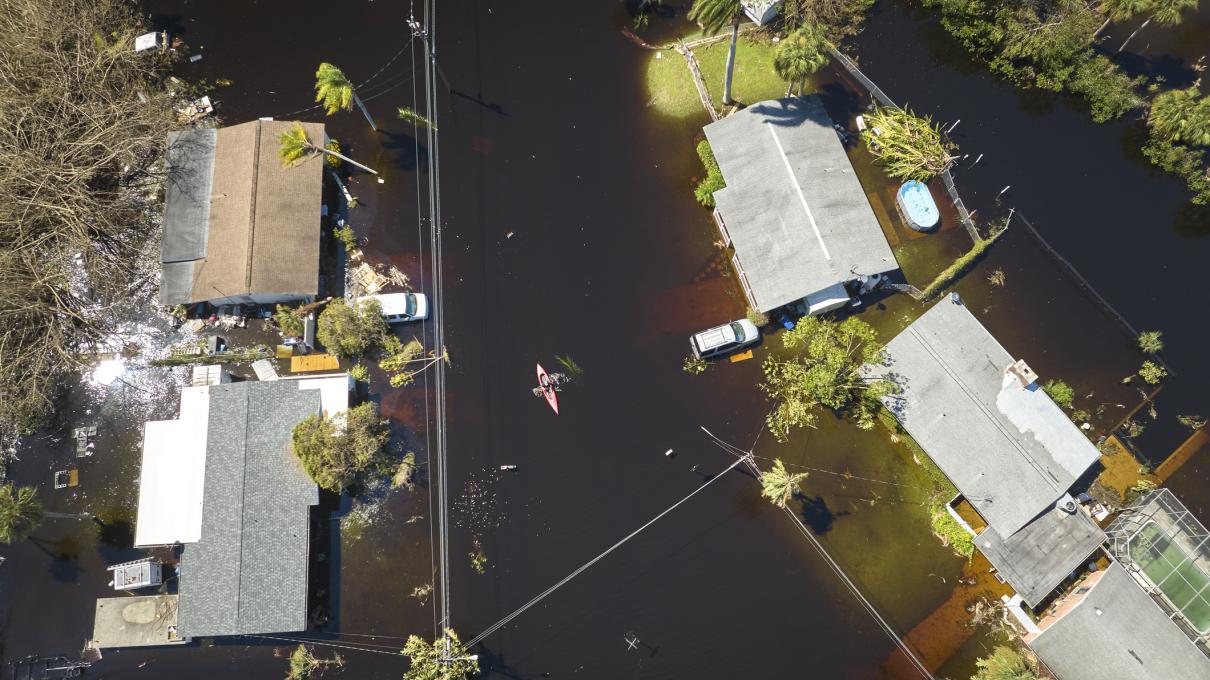Summer Reads

Hurricane Ian flooded houses in Florida residential area [Credit: Bilanol]
The following articles are a selection of articles published in the last year from LCAU affiliated faculty and researchers.
Demolition after decline: Understanding and explaining demolition patterns in US and German shrinking cities by Shuqi Gao, Hendrik Jansen, and Brent Ryan
Demolition is one of shrinking cities' most important strategies to deal with vacant and abandoned properties, but processes and outcomes vary between nations. How do demolition patterns differ or agree between shrinking cities in different nations, and what explains agreement or difference? This study analyzes demolition patterns in two mid-sized, isolated shrinking cities, the U.S. city of Flint and the German city of Dessau, between 2002 and 2016. We found significantly different patterns of demolition in the two cities. Demolition is more concentrated in Dessau, and more diffuse in Flint. We explain this difference in demolition patterns through three factors: housing tenure, social and physical structure, and demolition policy. Compared with Flint, Dessau has a much higher level of rental housing that concentrates in its urban center, facilitating tenant relocation into analogous units and permitting concentrated demolition. Flint's urban structure is homogenous with repetitive blocks of privatelyowned single-family housing, presenting a barrier for public intervention in vacancy. Dessau's demolition is financed by federal policy with explicit spatial intentions, whereas Flint's demolition is complaint-driven without substantial spatial consideration. The study findings indicate that demolition pattern is embedded in structural, historical, and national factors.
////////////////////////
Spectrums of Relocation: A typological framework for understanding risk-based relocation through space, time and power by Lizzie Yarina and James L. Wescoat Jr.
This paper reviews and classifies forms of environmental relocation, including retreat, migration, and resettlement, which are increasingly being considered and promoted as mechanisms for adapting to environmental risks. Current research and practice in relocation planning lacks a typological framework for assessing the many modes and norms of risk-based movement. Classical and critical location models help theorize how populations have come to be settled in differentially risky places in the first place, and are helpful for categorizing relocation situations and evaluating the relocation planning strategies. Written from the perspective of environmental design and planning disciplines, our typological framework emphasizes relocation as spatial processes shaped by environmental risk, and the article thus focuses on relocation, retreat, and resettlement processes. A systematic review of current research on relocation and resettlement identified six descriptive spectrums of relocation attributes: agency, planning, grouping, speed, distance, and temporality. We discuss the normative aspects of those spectra, and relate them to the location and relocation literatures. We then combine these attributes to construct a typology of relocation processes through the lenses of space, time, and power. By considering normative as well as descriptive aspects of relocation, we show how the typology can help address the equity of relocation. The resulting framework provides an analytical and planning tool that is practical and flexible. It can be used to assess and compare relocation projects that have already occurred as well as to evaluate strategies for relocation planning.
////////////////////////
Mitigating peak load and heat stress under heatwaves by optimizing adjustments of fan speed and thermostat setpoint by Zhujing Zhang, Kevin J. Kircher, Yuan Cai, Jonathon G. Brearley, David P. Birge and Leslie K. Norford.
Heatwaves are becoming more frequent and severe, intensifying cooling demand and reducing air conditioner efficiencies. This causes peaks in electricity demand that pose operational challenges to power grids. This paper provides methods to mitigate demand peaks and heat stress under heatwaves by jointly adjusting fan speeds and thermostat setpoints in buildings. The methods involve (1) learning baseline models to predict load and thermal comfort, (2) fitting perturbation models that relate fan speed and thermostat setpoint adjustments to perturbations in load and thermal comfort, and (3) optimizing peak load and thermal comfort. The methods are implementable in real buildings, providing fast, accurately predicted optimized solutions that flatten demand peaks and mitigate personal heat stress. This paper demonstrates the methodology through simulation-based case studies of a single building and a six-building neighbourhood. In case studies, the methods reduce peak load by 8–10% while maintaining occupants' thermal comfort within safe and comfortable ranges.


